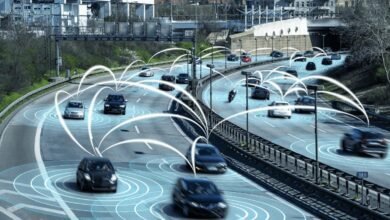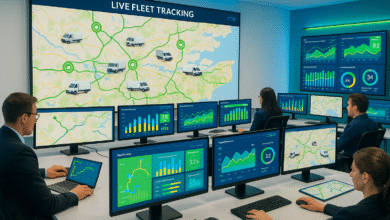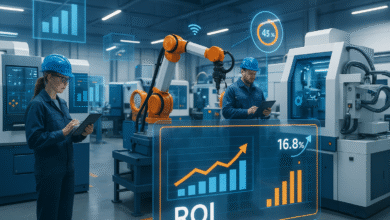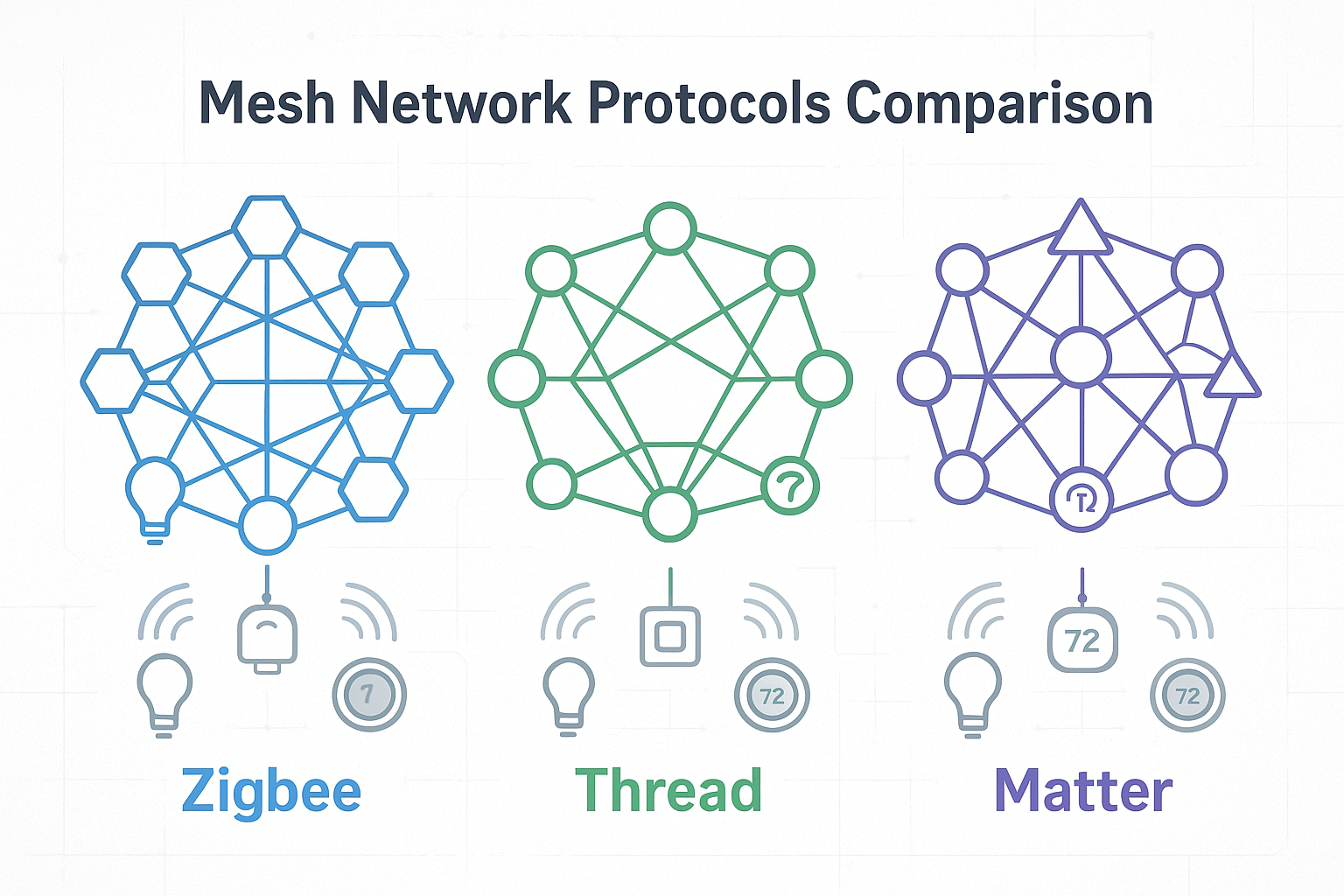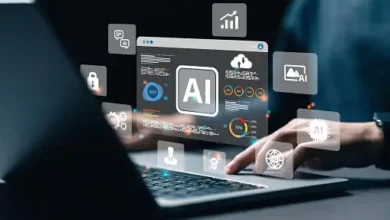What Is Inter IoT? A Guide to the Internet of Things
Learn what Inter IoT and the Internet of Things are. Discover how IoT devices connect, work together, and transform homes, businesses, and industries today.
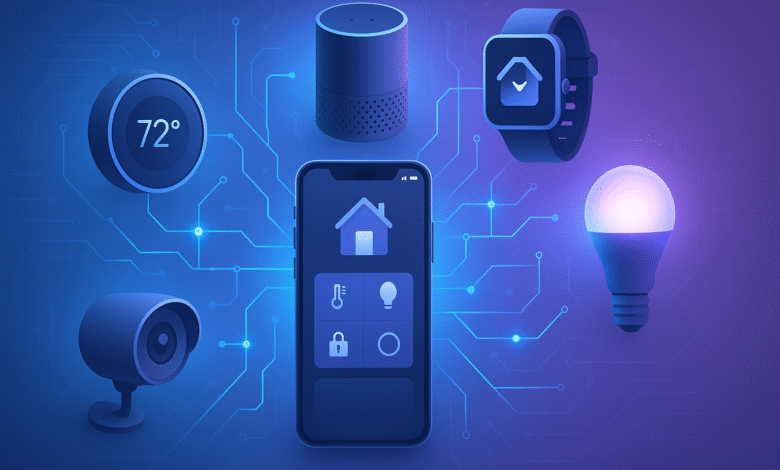
Have you ever wondered how your phone can control your bedroom lights? Or how your refrigerator knows when you are running low on milk? Welcome to the world of the Internet of Things, often called IoT. The Internet of Things is basically a huge network of everyday objects that can talk to each other over the internet. Think about it: your smartwatch, your car, your thermostat, and even your washing machine can all connect and share information without you having to do anything.
These connected devices are often called smart devices because they are smart enough to collect data, send messages, and make decisions all on their own. The term Inter IoT refers to how these devices work together and communicate with each other in an interconnected way. It’s like having an invisible web connecting everything around you.
In this guide, we will explore what the Internet of Things really means, how it works, and why it matters for your future. Whether you are interested in technology or just curious about the devices you use every day, understanding IoT technology will help you see the world in a brand new way. The best part? You do not need to be a tech expert to get it. We will break everything down into simple, easy-to-understand pieces that anyone can learn.
What Exactly Is the Internet of Things?
IoT devices are physical objects that have tiny computers, sensors, and internet connections built into them. The Internet of Things is the system that lets all these objects talk to each other and to you. Instead of just being dumb tools that do one job, these smart devices can now think, learn, and respond to what is happening around them.
The simplest way to understand IoT is to think about your home. You probably have a television, a microwave, and lights. These used to be just regular devices. Now, many of them can connect to the internet and become connected devices. Your smart TV can download shows and remember what you like to watch. Your smart lights can turn on when you come home. Your smart thermostat can learn your temperature preferences and adjust itself automatically.
IoT technology is not just about making your life easier at home. Businesses use it to track products, keep machines running smoothly, and understand their customers better. Hospitals use smart devices to monitor patient health. Farms use IoT systems to check soil moisture and control watering automatically. The possibilities are almost endless.
Understanding Connected Devices
Connected devices are the backbone of the Internet of Things. Any object that has a sensor, software, and an internet connection can become part of an IoT network. But what makes a device “connected”? Here are the key features:
- Each device has a unique internet address, kind of like a home address for the internet
- The device can collect information from its surroundings using sensors
- The device can send that information to other devices or to the internet
- The device can receive messages and commands from other devices or from your phone
- The device can work automatically without needing you to tell it what to do every single time
Think of a smart device like a tiny robot. It has eyes (sensors) that see what is happening. It has a mouth (software) that can talk to other devices. It has a brain (processor) that can make simple decisions. And it has hands (actuators) that can do things like turn on a fan or open a door. When you put millions of these tiny robots together, they create the Internet of Things.
How Does Internet of Things Technology Work?
Understanding how IoT technology works is easier than you might think. Let us break it down into simple steps.
The Four Main Parts of an IoT System
Every IoT system has four important pieces that work together:
- Sensors and Devices: These are the physical objects that collect information. A temperature sensor measures heat. A motion sensor detects movement. A camera captures images. These sensors turn real-world information into digital data that computers can understand.
- Network Connection: Once a sensor collects data, the information needs to travel somewhere. Connected devices use different types of internet connections. WiFi lets devices connect through wireless networks. Bluetooth connects devices over short distances. Cellular networks, like 4G and 5G, connect devices even when they are far from home. Some devices use special long-range networks like Zigbee or LoRaWAN that use less power.
- Data Processing: After information travels through the network, it goes to a computer system for analysis. This could be a company’s server, a cloud computing system, or an edge device. These systems organize the data, look for patterns, and figure out what the information means. They might notice that your thermostat is using too much energy or that a factory machine needs maintenance soon.
- User Interface: Finally, the results come back to you through an app on your phone, a website, or a notification. You see that your house is too warm, so you adjust your thermostat. You get an alert that your front door is unlocked. You check your fitness tracker to see how many steps you walked today. This closes the loop and lets you make decisions based on real information.
How Devices Communicate
Smart devices in an IoT network need to speak the same language to understand each other. They use special communication rules called protocols. MQTT is one popular protocol that lets devices send quick messages using very little power. CoAP is another protocol designed for devices with limited memory and battery life. These protocols are important because IoT devices often run on batteries and need to save power.
When you send a command through your phone app, your phone connects to the internet and sends a message to the device. The device receives the message, processes it, and takes action. Then it sends back a confirmation. All of this happens in just a few seconds, making it feel like magic even though it is just technology working the way it was designed.
Real-World Examples of Internet of Things
The Internet of Things is not just some future idea. It is already everywhere in your life. Here are real examples of IoT devices and smart devices you probably use or see every day.
Smart Homes and Household Devices
A smart home uses IoT technology to make your house more comfortable and secure. Smart thermostats like Nest learn your temperature preferences and adjust heating and cooling automatically. This saves energy and money. Smart speakers like Amazon Alexa can answer questions, play music, and control other devices just by listening to your voice.
Smart lighting systems let you control lights from your phone or have them turn on automatically when you come home. Smart locks let you open your door with your phone instead of carrying a key. Smart cameras let you watch your home even when you are at work or on vacation. Smart refrigerators can tell you what food you have inside and even order groceries when you are low on supplies.
Wearable Technology
Wearable smart devices are designed to be worn on your body. Fitness trackers and smartwatches monitor your heart rate, count your steps, and track calories burned. They collect health data and help you stay active and healthy. Some smartwatches can even detect irregular heartbeats and alert you to get medical help.
Medical devices like pacemakers and glucose monitors are also IoT devices. They collect information about your health and can send alerts to doctors if something is wrong. These devices can literally save lives by catching health problems early.
Industrial and Business Applications
Businesses use IoT systems in completely different ways. Factories use smart devices on assembly lines to check product quality and detect problems immediately. If a machine is not working right, the system alerts workers right away instead of letting broken products get made.
Supply chain companies use GPS trackers and sensors to follow products from the factory to your store. They can tell where packages are at any moment and make sure everything arrives on time. Retailers use IoT technology to track inventory, so stores always have the products customers want in stock.
Smart Cities
Entire cities are becoming smarter by using IoT devices. Smart traffic lights adjust timing based on how much traffic is on the road, reducing congestion. Parking meters connected to the internet help you find open spots easily. Smart street lights turn on only when someone is nearby, saving electricity. Public transportation systems use IoT technology to give passengers real-time information about when buses and trains are arriving.
Benefits of Internet of Things Technology
Why should you care about the Internet of Things? Because it brings real benefits to everyday life and to businesses.
Making Life More Convenient
IoT devices make daily tasks easier and less annoying. Imagine waking up with your alarm, and your coffee maker automatically starts brewing. Your shower automatically warms to your preferred temperature. Your car checks the weather and tells you that it might rain, so it reminds you to bring an umbrella. Your smart devices work together to make your morning smooth and organized.
Saving Money and Energy
Connected devices help you use less energy, which means lower electricity bills. Smart thermostats learn your patterns and adjust temperature automatically, saving energy when you are away. Smart lights turn off when no one is in a room. Smart appliances use water and electricity more efficiently. Over time, these savings add up to real money in your pocket.
Improving Safety and Security
IoT technology keeps you safer in multiple ways. Smart security cameras let you monitor your home and property from anywhere. Smart locks prevent break-ins and let you control who enters your home. Smoke detectors and carbon monoxide detectors send alerts to your phone if there is danger. In cars, IoT systems can detect accidents and automatically call for help.
Better Decision-Making for Businesses
Companies use data from IoT systems to make smarter choices. Retail stores see which products customers pick up and where they spend the most time. Manufacturers predict when machines will break down before they actually do, preventing expensive shutdowns. Hospitals track equipment location and patient vital signs to provide better care. This data helps businesses run smoother, save money, and serve customers better.
Challenges and Concerns with IoT
As cool as the Internet of Things sounds, it is not perfect. There are real challenges that people and companies face.
Security and Privacy Issues
When IoT devices collect and send data, hackers might try to steal that information. Your location, your shopping habits, your health information, these are all valuable to the wrong people. Many smart devices and connected devices were not designed with strong security from the start, making them easier to hack than computers. If someone hacks your smart home system, they could unlock your doors or turn off your lights to rob you.
Privacy is another big concern. IoT systems collect tons of data about your behavior and preferences. Companies track where you go, what you buy, what you eat, and how you sleep. Some people worry that this data collection goes too far and that their privacy is not protected enough.
Compatibility Problems
Here is a frustrating problem: smart devices from different companies sometimes cannot talk to each other. Your Samsung smart devices might not work smoothly with your Apple devices. Your Philips lights might not connect properly with your Amazon speaker. This happens because there is no international standard that all IoT device makers must follow. You sometimes have to use multiple apps to control all your connected devices instead of just one simple app.
Cost and Complexity
Setting up IoT technology can be expensive. You have to buy multiple smart devices, set them up, and pay for an internet connection. For businesses, building complete IoT systems requires expensive equipment, skilled workers, and ongoing maintenance. Many companies do not have the money or expertise to implement IoT yet.
Dependence on Internet Connection
IoT devices need the internet to work. If your wifi goes down, your smart home stops working. You cannot unlock your smart lock or control your lights. This dependence on constant internet connection is a real problem in rural areas where internet is not reliable.
The Future of Internet of Things
The Internet of Things is just getting started. Experts predict that there will be over 75 billion connected devices worldwide by 2025. That is way more than the number of people on Earth.
Artificial intelligence will make IoT systems even smarter. Instead of just collecting data, smart devices will predict what you need before you ask. Your fridge might order groceries automatically. Your car might take a different route before you even realize traffic is bad. Your health tracker might suggest you see a doctor before you feel sick.
5G networks will make IoT technology faster and more reliable. Doctors in one country could perform surgery on a patient in another country using robots controlled over 5G. Factory robots will respond instantly to commands. Cities will become even smarter at managing traffic and emergencies.
The focus on security and privacy will also improve. Companies are starting to design IoT devices with protection from the start instead of adding it later. Governments are making rules about how companies can collect and use your data. Better standards will make connected devices from different companies work together more smoothly.
Getting Started with IoT
If you want to start exploring the Internet of Things, you do not need to spend a lot of money. Start small with one or two smart devices that interest you. A smart speaker is a great first device because it can control other IoT devices and teach you how connected devices work together.
For more information about building and learning IoT technology, check out resources like MIT’s Introduction to Internet of Things for educational programs and IBM’s Internet of Things explained guide for business perspectives.
Join online communities where people discuss IoT systems. Watch tutorials about setting up smart devices. Start with your smart phone and gradually build your understanding. The Internet of Things might seem complicated now, but everyone starts as a beginner.
Conclusion
The Internet of Things is transforming how we live and work. IoT technology is taking ordinary objects and making them extraordinary by adding sensors, internet connections, and the ability to communicate with each other. From smart devices in your home that make life easier to industrial IoT systems that run factories and hospitals, the Internet of Things is everywhere.
While challenges like security concerns and compatibility issues exist, the benefits of connected devices far outweigh the problems. As IoT devices become cheaper and more common, they will play an even bigger role in your future.
Understanding the basics of the Internet of Things today will help you adapt to tomorrow’s connected world. Whether you are interested in technology as a career or just want to understand the devices around you, learning about IoT is a smart investment in your future. The age of the Internet of Things is not coming, it is already here, and now is the perfect time to learn how it all works.


